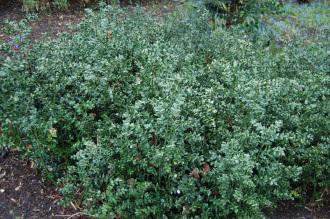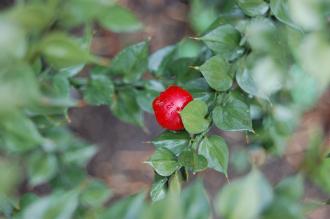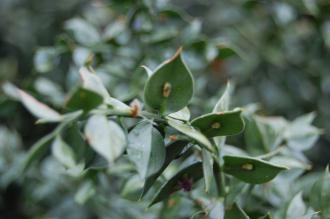
Ruscus aculeatus (23/03/2013, Kew Gardens, London)
Position: Full sun to shade
Flowering period: Early spring
Soil: Moist, well drained
Eventual Height: 75cm
Eventual Spread: 1m
Hardiness: 7a – 10a
Family: Asparagaceae
Ruscus aculeatus is a slow-growing evergreen shrub, with a low growing habit. Its dark green spiny leaves (which are actually flattened stems) are lanceolate with entire margins, up to 2.5cm long and 1cm wide. At the center of this ‘leaf’ a small dark green appendage is present, this is the true leaf. Its small green and purple dioecious flowers appear at the true leaf axil. Its red fruit is a berry and up to 1cm across and are retained on the plant through the winter months. Its roots are rhizomes which aids its spread.

Ruscus aculeatus Berry (23/03/2013, Kew Gardens, London)
Ruscus aculeatus, commonly known as Butcher’s Broom, Jew’s Myrtle, Knee Holly, Box Holly, Prickly Box or Sweet Broom, is native to western and southern Europe (including the UK) and south-west Asia. In its native habitat it grows in woodlands and coastal cliffs.
The etymological root of the binomial name Ruscus is from the Latin name for this plant Ruscum. Aculeatus is from the Latin meaning ‘prickly’.
The landscape architect may find Ruscus aculeatus useful as an evergreen low growing shrub, particularly in the dry shade of mature trees. It may be planted as a barrier plant due to its prickly nature. If berries are required both male and female plants must be planted. Once established this shrub is drought tolerant.
Ecologically, Ruscus aculeatus flowers are attractive to pollinating insects. Its berries are attractive to some birds and mammals.

Ruscus aculeatus Leaf (23/03/2013, Kew Gardens, London)
Ruscus aculeatus prefers moist, fertile, well-drained soils. It tolerates most pH of soil. It dislikes wet soils.
Ruscus aculeatus requires little maintenance. Pruning should be carried out in spring.

